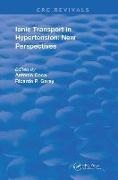Read more
List of contents
1. The Erythrocyte as a Cellular Model for the Clinical Investigation of Essential Hypertension Patients 2. Genetic Abnormalities of the Na-K-Cl Cotransport in Experimental and Primary Hypertension 3. The [Na+,K+,Cl-] Cotransport System: Relevance in Essential Hypertension 4. Kinetic Abnormalities of the Na+,K+ Pump in Essential Hypertension 5. The Li+/Na+ Countertransport in Hypertension 6. The Na+/H+ Antiport: Its Role in Cellular Metabolism and in the Pathophysiology of Essential Hypertension 7. The Cl-/HCO3- Anion Exchanger in Hypertension 8. Endogeneous Digitalis-Like Factors: Past Progress and Future Prospects 9. Atrial Natriuretic Peptide, Sodium Transport Systems and Essential Hypertension 10. Vascular Muscle Calcium Channels in Hypertension 11. Abnormalities of the Calcium Pump in Primary Hypertension 12. Ion Transport and Left Ventricular Hypertrophy in Essential Hypertension 13. Abnormalities of Ion Transport in Hypercholesterolemia and Hypertriglyceridemia: A Link with Essential Hypertension? 14. Abnormalities of Ion Transport and the Pathophysiology of Essential Hypertension: Therapeutic Implications and Future Perspectives
About the author
Antonio Coca M.D., is Chief, Hypertension Unit, Depart of General Internal Medicine, Hospital Clinical, School of Medicine, University of Barcelona, Spain.
Ricardo P. Garay, M.D., is Director of Research, INSERM Unit 2, School of Medicine of Creteil, France.
Summary
First Published in 1994: Ionic Transport in Hypertension is devoted to examining the hypothesis that essential hypertension is a heterogeneous disease in its pathophysiological mechanisms as well as in its clinical and therapeutic considerations.

